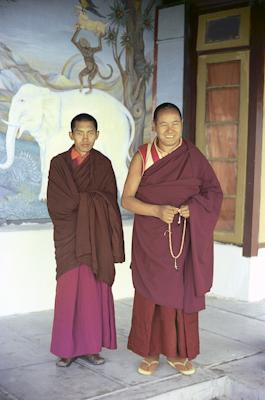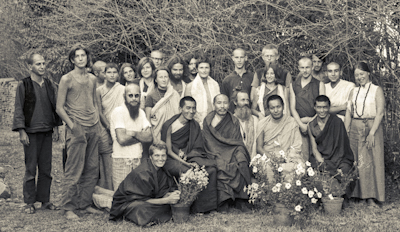As the year end approaches, we rejoice in all that we have accomplished together for the benefit of all: hundreds of thousands of books and ebooks, thousands of free teachings and advices on our website, more than 100,000 followers on social media reading daily Dharma gems, video, audio, multimedia presentations, and so much more.
Next year we will publish Lama Yeshe’s biography, Big Love: The Life and Teachings of Lama Yeshe. The design phase of the book is nearly complete and we are planning on printing it early 2019. Following that we will publish Lamrim Year, a book of daily contemplations drawn from the teachings of Lama Yeshe and Lama Zopa Rinpoche and based on the lamrim outline.
Read on for more details!
Join LYWA in Bringing Peace and Happiness to All
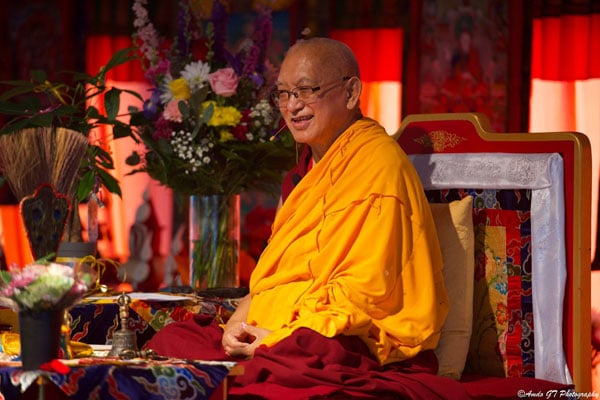 For more than twenty years, Lama Yeshe Wisdom Archive has been excelling at fulfilling its twin missions: preserving the precious teachings of Lama Yeshe and Lama Zopa Rinpoche and making these teachings available to all. In this way we offer the Dharma, with its message of love, compassion and equanimity towards all, to interested students and seekers the world over.
For more than twenty years, Lama Yeshe Wisdom Archive has been excelling at fulfilling its twin missions: preserving the precious teachings of Lama Yeshe and Lama Zopa Rinpoche and making these teachings available to all. In this way we offer the Dharma, with its message of love, compassion and equanimity towards all, to interested students and seekers the world over.
As Rinpoche explained this August at Kurukulla Center in Boston:
When the teachings materialize in a book they can go very far; they can go all over the world, and reach people everywhere. So can you imagine? The benefits are really unbelievable. Of course, we can’t travel that much but books can go everywhere. So this is one of the great activities of the FPMT. Through books we awaken people’s minds, suffering beings’ minds, from the deep sleep of ignorance.
As you know, LYWA materializes teachings not just in books but also on our website, in multimedia presentations, in audio books and ebooks. In these myriad ways we reach people in every corner of the world, helping them cultivate wisdom and peace in their minds so that they in turn can benefit as many beings as possible.
We cannot do all this without you. As we launch our year-end appeal and look forward to another year of doing this precious work, we invite you to join us in our mission to bring peace and happiness to the world, one mind at a time. You can Donate Now, or if you prefer you can wait until Lama Tsongkhapa Day on Sunday, a special day to make offerings - don't worry, we'll remind you!
Thank you so much for all of your support!
FROM THE VIDEO ARCHIVE: Life, Death and after Death
Lama Yeshe gives a frank talk about the practice of powa, the transference of consciousness at death, in London, England in 1982. Lama notes the best death is a happy death and how powa practice can help us avoid a death that is disastrous, unhappy or confused. This video is an excerpt from the DVD Life, Death and After Death. You can read along with the edited transcript on our website. Visit and subscribe to the LYWA YouTube channel, to view other freely available videos from our archive.
As our holiday gift to you we are offering all of our DVDs, including Life, Death and After Death, for FREE! All you need to do is pay for shipping. It is a great chance to access hours of teachings given by Lama Yeshe and Lama Zopa Rinpoche that are not currently public on our YouTube channel.
WHAT IS NEW ON OUR WEBSITE
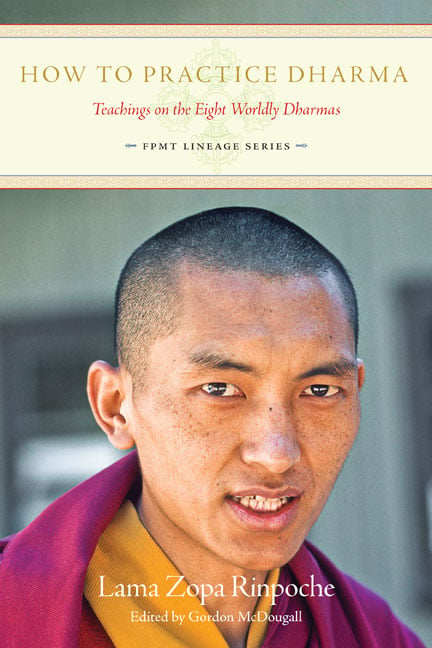 In October, two editors at LYWA, Sandy Smith and Gordon McDougall, attended Lama Zopa Rinpoche's teachings in Madrid, Spain. Sandy was happy to report that Rinpoche advised students to read How to Practice Dharma: Teachings on the Eight Worldly Dharmas, edited by Gordon McDougall and published by LYWA. Rinpoche said:
In October, two editors at LYWA, Sandy Smith and Gordon McDougall, attended Lama Zopa Rinpoche's teachings in Madrid, Spain. Sandy was happy to report that Rinpoche advised students to read How to Practice Dharma: Teachings on the Eight Worldly Dharmas, edited by Gordon McDougall and published by LYWA. Rinpoche said:
Read this, study this, then begin retreat after that, whatever you can do, Vajrasattva or anything, tantra or anything, that is so helpful, it cleans your mind, then with clean mind you begin the retreat. So my suggestion is that.
In honor of this we have shared new excerpts from How To Practice Dharma on our website. This book deals with the eight worldly dharmas, essentially, how craving desire and attachment cause us to create problems and suffering and how to abandon these negative minds in order to find perfect peace and happiness. You can purchase the book or find the audio version on Amazon.
- Pray to Benefit Others: Rinpoche handwrote this card and sent it to a student.
- Two Thousand Nyung Näs: In this letter, Rinpoche advised a student to do two thousand nyung näs. Rinpoche also wrote about the power of nyung näs and the importance of generating the correct motivation for the practice.
- Water Bowl Offerings as a Group Practice: A group of retreatants had completed 100,000 water bowl offerings together and offered it to Rinpoche. They asked if they could do other preliminary practices in the same way.
- The Benefits of Supporting the Center and Sangha: Advice for a benefactor who had made offerings to a center and to the Sera Je Food Fund.
As always, you can see a list of all the newly-posted advices on our website.
A new Russian Translation
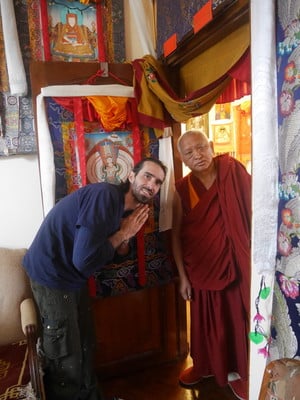 We are happy to share with you a new Russian translation of a talk given by Tenzin Ösel Hita, Adapting Positively to Any Circumstance. Translated by Anastasia Stoliarova. This talk was given at Institut Vajra Yogini, France, on February 19, 2017. Ösel spoke about the importance of developing inner values and how to adapt positively to any life circumstance. You can download the PDF and find more Russian translations here.
We are happy to share with you a new Russian translation of a talk given by Tenzin Ösel Hita, Adapting Positively to Any Circumstance. Translated by Anastasia Stoliarova. This talk was given at Institut Vajra Yogini, France, on February 19, 2017. Ösel spoke about the importance of developing inner values and how to adapt positively to any life circumstance. You can download the PDF and find more Russian translations here.
We are grateful to work with so many amazing translators who make our publications and transcripts available in languages other than English. Please see our website for links to translations in sixteen languages.
Update on Big Love

Nick Ribush
Director
This Month's Teaching: The First Kopan Meditation Course
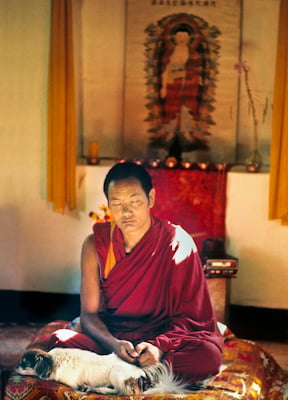 Zina was still eager for Lama Yeshe to teach a course, but he refused. She turned to Zopa Rinpoche. “She pestered me relentlessly,” Rinpoche recalled. “She kept on asking until I began to feel encouraged in my heart and developed a strong wish to do it. I asked Lama Yeshe what he thought. He replied, ‘Well, if you think it will be beneficial, then you do.’ So, with Lama’s blessing, I agreed,” said Zopa Rinpoche.
Zina was still eager for Lama Yeshe to teach a course, but he refused. She turned to Zopa Rinpoche. “She pestered me relentlessly,” Rinpoche recalled. “She kept on asking until I began to feel encouraged in my heart and developed a strong wish to do it. I asked Lama Yeshe what he thought. He replied, ‘Well, if you think it will be beneficial, then you do.’ So, with Lama’s blessing, I agreed,” said Zopa Rinpoche.
The first course was held in April 1971. It was springtime at Kopan, dry and breezy. The monsoon rains weren’t due to start until the end of May or early June, but the colder winter months had passed and the temperature was quite warm during the days. Zina took charge of the overall arrangements and Zopa Rinpoche taught a ten-day course based on his stamp-filled text on thought transformation. With help from Anila Ann, he managed to translate six lines on hell, two lines on the perfect human rebirth and one line on karma. These were developed into an extensive meditation on how to regard friends, enemies and strangers with equanimity, and an explanation of the sufferings of animals and hungry ghosts. In those days, practically the only English-language lamrim book was Herbert Guenther’s translation of Gampopa’s Jewel Ornament of Liberation, which was first published in 1959. “I taught mainly about the lower realms, the sufferings of hell beings and animals, ending up with the sufferings of human beings,” said Rinpoche:
In order to realize the three lower realms, we must fully see the sufferings that exist there. However, at the moment we have no power to perceive these things directly. Therefore we should try to experience those realms through our practice, using the examples shown in the teachings. In this way we can gain the power to see this suffering clearly in our minds.
Even at this moment, most beings are suffering in the three lower realms, especially in the hell realms. Their suffering has not been created by God or fixed by some other being. It is only a creation of those suffering beings’ minds, just as in a dream we may sometimes suffer in a fire, or from all kinds of fearful persons or demons fighting and frightening us. In the same way that these fearful dreams and visions are the creation of our illusive mind, so are the suffering and the realms of the naraks and so forth the creation of beings’ ignorant mind. However, the narak realms are not the same as dreams, but are karmic creations of the ignorant mind. This is similar to the way that one place can be seen differently by two different people—one may see a clean place while another person may see a dirty place. Although the object is the same, the view varies according to the level of mind, fortune and the karma the being has created. As the mind reaches higher levels, the enjoyments and the visions change and the transcendental awareness and happiness we experience increases more and more.
Each living being’s samsara is a creation of that mind; each living being’s enlightenment is also a mental creation. In a dim room lit by a small candle with a flickering flame, a person without acute perception may see a fearful moving animal or demon, become afraid and perhaps throw something at it. This problem is only the creation of that person’s mind. The person with a calm, relaxed mind, on the other hand, will see what is actually there clearly. All experiences are created by the mind. Similarly, the suffering of the hell being is merely the creation of that suffering being’s mind. Therefore, the choice to experience suffering, to be in a suffering realm, or to be in the perfect peace of enlightenment depends upon the decision of the mind.
Around a dozen people took that course—Zengo’s students from Bodhgaya as well as Åge, Zina and Claudio Cipullo. Claudio had been down in Bodhgaya when he found himself staring fixedly at a photo of Lama Yeshe. “I decided he was calling me! That course was like an explanation of my whole life,” said Claudio. Losang Nyima acted as umdze and took care of the candles, water bowls, incense and food offerings arranged on the altars. He also supervised all the cooking. During the course Lama Yeshe stayed down at Max’s house.
Two days before the end of the course Lama Yeshe, in the company of a Lhasa Apso, returned to Kopan and gave a couple of talks. This wonderful little dog, which actually belonged to Rinpoche, a gift from his mother, accompanied Lama nearly everywhere and was much admired by everyone at Kopan. Many strays found their way to Kopan and devoured any food they were offered, but this little dog always sat back very nobly and waited. She never fought over food or tried to get at it until everyone else had finished. Then she’d eat alone, quietly. Her name was Drolma, which is Tibetan for Tara, the female buddha of enlightened skillful activity.
Excerpted from the 1971 chapter of Big Love, by Adele Hulse, forthcoming from LYWA in 2019. You can read more from this chapter on our website.
























